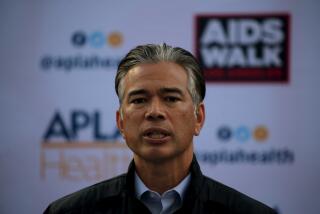CalPERS fee disclosure raises question of whether private equity returns are worth it
- Share via
The nation’s largest public pension fund peeled back a layer of secrecy to reveal that it has paid private equity managers $3.4 billion in bonuses since 1990, a hefty figure sure to heighten arguments over whether the controversial sector is worth its high risk and expense.
The California Public Employees’ Retirement System said Tuesday that it paid $700 million in so-called performance fees just for the last fiscal year that ended June 30. The disclosure comes as critics increasingly question the wisdom of pension funds investing in such complicated corporate deals as start-ups and leveraged buyouts.
CalPERS officials emphasized that private equity generated $24.2 billion in net profit for the state’s retirees over the 25-year period, a strong performance that they said more than makes up for the sector’s added risk, complexity and cost.
SIGN UP for the free California Inc. business newsletter >>
Like many public pension funds, CalPERS has relied on the potentially large returns on private equity investments to help finance benefits for its 1.7 million current and future retirees — and to avoid turning to taxpayers to make up shortfalls.
“Returns from those sorts of investments need to be much higher than returns on assets not bearing similar risks and especially to justify such huge fees,” said David Crane, a Stanford University lecturer in public policy. “From what I read today about CalPERS’ returns on private equity, it’s hard to see that being the case.”
CalPERS’ disclosure, although not the first of its kind, is considered a landmark because of the system’s size and influence in the market. It’s expected to lead major pension funds to demand similar, or even more, disclosures from a multitrillion-dollar industry that has been insulated from calls for reform by the relatively rich returns it generates.
The California State Teachers’ Retirement System, for instance, plans to take up the issue of private equity disclosure at the system’s February board meeting.
“The CalSTRS Investment Committee has asked [its staff] for a greater degree of reporting and cost accounting information, which will require additional resources,” said Ricardo Duran, a spokesman for the nation’s second-largest public pension fund.
The bonuses, known in the industry as carried interest, don’t include annual management fees. Typically, bonuses amount to 20% of profits over a certain target on top of a 2% management fee, a formula known as 2-and-20.
Because of its size, now at about $295 billion in assets, CalPERS has been able to command a somewhat lower bonus rate of about 12%. Still, private equity’s outsized compensation system remains baffling to many.
California State Treasurer John Chiang is sponsoring legislation requiring even more extensive fee disclosure for private equity firms doing business with the state’s pension funds.
“Too much compensation information remains missing, and no amount of profit-sharing returns should cause us to turn a blind eye to demanding full transparency and accountability from firms which call themselves our partners,” Chiang said Tuesday.
“With any other investment class, it would be a no-brainer to demand full disclosure of all fees and costs.”
CalPERS officials, who ordered the review after acknowledging a need to get a better handle on private equity fees, believe they have reaped the benefits of private equity and are satisfied with the performance of the $27.5-billion portfolio, which represents 9% of the total fund.
“We have been rewarded appropriately for the risks that we took,” said Ted Eliopoulos, CalPERS’ chief investment officer.
Crane isn’t so sure. The difficulty in getting out of private equity deals and the high debt loads the sector usually carries raise questions about whether the investments are worth the inherent dangers, he said.
“If the returns were worth the leverage and liquidity risks, then such levels of fees might be worth it,” said Crane, who was an advisor to former Gov. Arnold Schwarzenegger.
The high-stakes business of buying and selling whole companies, dominated by massive global players such as Carlyle Group, Blackstone Group and Kohlberg, Kravis & Roberts, has struggled to shed a swashbuckling image that dates to its roots in the go-go leveraged-buyout boom of the 1980s.
Private equity and its backers have been bracing for the CalPERS’ fee disclosure since the system said in July that it was coming. On Tuesday, Invest Europe, a private equity trade group based in Brussels, released a new professional standards handbook for the industry that emphasized the need for heightened standards of “transparency and accountability,” particularly with regard to fees.
The industry’s main U.S. trade group said Tuesday that the CalPERS disclosure represented an affirmation that the interests of the fund and its managers are aligned.
“The data released by CalPERS today shows the success of its private equity program and is excellent news for California’s public employees, pensioners and the state budget,” said James Maloney, spokesman for the Private Equity Growth Capital Council in Washington.
The backdrop to the fee fight is a simmering public animus toward Wall Street, particularly since the financial crisis of 2008, coupled with an increasingly problematic reliance on the same financial industry to generate the investment returns needed to fund a huge portion of the nation’s retirement system.
CalPERS, for one, has been hard-pressed to keep up with looming obligations. Its fund is seen as about 74% funded, down from 77% as of June 30, 2014, mostly because of weak performance from its global stock portfolio.
CalPERS already is dialing back its risk.
Last week, its board agreed to cut the fund’s expected rate of return to 6.5%, from 7.5%, though in incremental steps that could take 20 years. The move drew criticism from Gov. Jerry Brown, who urged the system to cut the expected return to 6.5% over five years to curb its reliance on higher-risk investments.
Caught in the middle are taxpayers, who must make up for investment shortfalls — a challenge for communities struggling with retirement costs they said are already unsustainable.
In a recent report, CalPERS’ main consultant strongly endorsed the private equity sector, noting that it had an annualized rate of return of 11.9% over the last 10 years, compared with 6.6% for CalPERS’ stock portfolio, and that it performed better than CalPERS’ public stocks over all relevant periods.
Last year, for instance, the private equity portfolio’s 8.9% return blew away the public stock portfolio, which returned an anemic 1%.
But Eileen Appelbaum, senior economist at the Center for Economic and Policy Research, a Washington think tank, countered that CalPERS’ private equity portfolio has failed to meet its own benchmarks over the last one, three, five and 10 years, important measures that seek to account for the added risk that comes with complicated and cumbersome assets.
“Comparing CalPERS’ private equity returns with the overall returns of the pension fund and/or their target return for the pension fund is meaningless,” she said.
Steven N. Kaplan, a finance professor at the University of Chicago, cautioned that although CalPERS’ private equity portfolio has indeed beaten alternatives in the past, even after fees, studies show the rate of outperformance has slowed more recently.
“You should watch it very carefully going forward,” he said.
ALSO
Average taxes on wireless bills in California reach a record 18%
For cable networks, holiday movies are the gift that keeps on giving
U.S. economic growth revised up for third quarter, which could ease path for Fed rate hike
More to Read
Inside the business of entertainment
The Wide Shot brings you news, analysis and insights on everything from streaming wars to production — and what it all means for the future.
You may occasionally receive promotional content from the Los Angeles Times.











